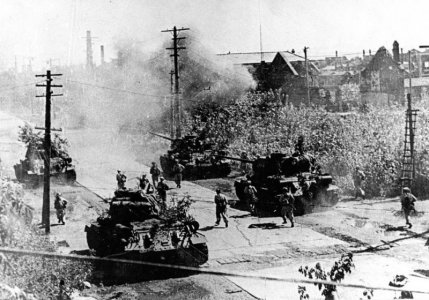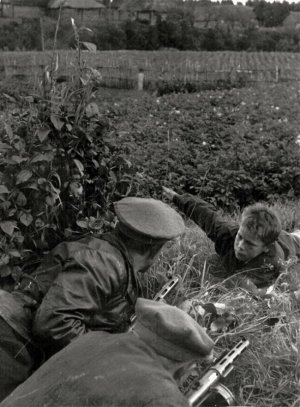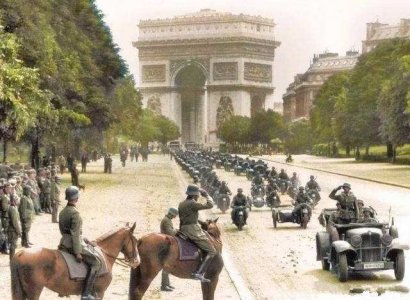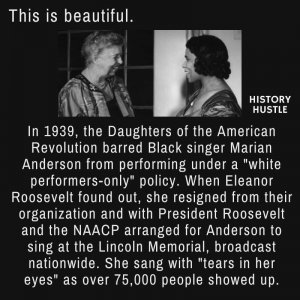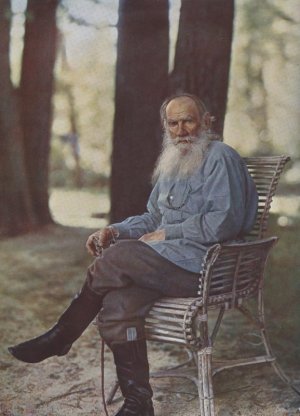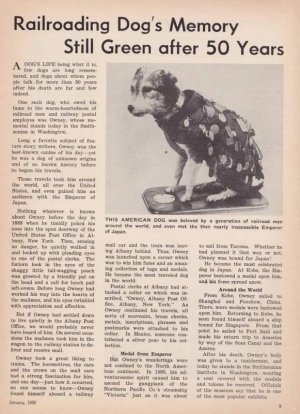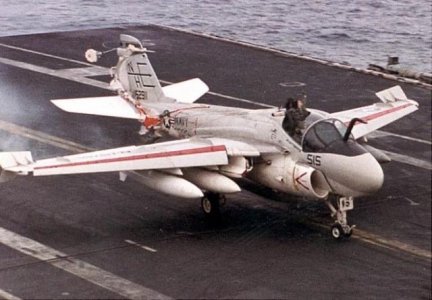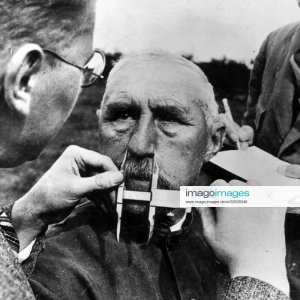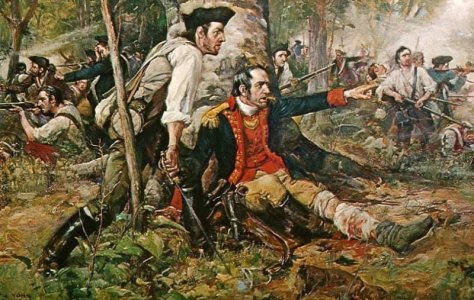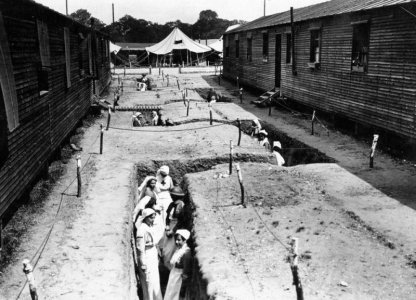Fun History Facts
1. During World War II, a Great Dane named Juliana was awarded the Blue Cross Medal. She extinguished an incendiary bomb by peeing on it!
2. Alexander the Great was accidentally buried alive. Scientists believe Alexander suffered from a neurological disorder called Guillain-Barré Syndrome. They believe that when he died he was actually just paralyzed and mentally aware!
3. There were female Gladiators in Ancient Rome! A female gladiator was called a Gladiatrix, or Gladiatrices. They were extremely rare, unlike their male counterparts.
4. The world’s most successful pirate in history was a lady named Ching Shih. She was a prostitute in China until the Commander of the Red Flag Fleet bought and married her. But, her husband considered her his equal and she became an active pirate commander in the fleet.
5. You may know them as the bunch of heroes that broke box office records with their movies. But, The Avengers was also a group of Jewish assassins who hunted Nazi war criminals after World War II. They poisoned 2,283 German prisoners of war!
6. From 1912 to 1948, the Olympic Games held competitions in the fine arts. Medals were given for literature, architecture, sculpture, painting, and music. Obviously, the art created was required to be Olympic-themed.
7. Famous conqueror, Napoleon Bonaparte, was once attacked by a horde of bunnies! He had requested that a rabbit hunt be arranged for himself and his men. When the rabbits were released from their cages, the bunnies charged toward Bonaparte and his men in an unstoppable onslaught.
Related: Statue of Liberty Facts
8. Cleopatra wasn’t actually Egyptian! As far as historians can tell, Egypt’s famous femme fatal was actually Greek!. She was a descendant of Alexander the Great’s Macedonian general Ptolemy.
9. Ketchup was sold in the 1830s as medicine. In 1834, it was sold as a cure for an upset stomach by an Ohio physician named John Cook. It wasn’t popularized as a condiment until the late 19th century!
10. Did you know Abraham Lincoln is in the wrestling hall of fame? The 6’4″ president had only one loss among his around 300 contests. He earned a reputation for this in New Salem, Illinois, as an elite fighter.
11.
George Washington opened a whiskey distillery after his presidency. After his term, Washington opened a whiskey distillery. By 1799, Washington’s distillery was the largest in the country, producing 11,000 gallons of un-aged whiskey!
12. During the Salem
witch trials, the accused witches weren’t actually burned at the stake. The majority were jailed, and some were hanged. But none of the 2,000 people accused ever got burned alive.
13. President Zachary Taylor died from a cherry overdose! Zachary Taylor passed away after eating way too many cherries and drinking milk at a
Fourth of July party in 1850. He died on July 9th from gastroenteritis. The acid in cherries along with the milk is believed to have caused this.
14. Andrew Jackson had a pet parrot. And he taught his parrot, Polly, to curse like a sailor. There is even one legend that the parrot had to be taken out of Jackson’s funeral for its proclivity for profanity!
15. The Bloody Mary wasn’t always called Bloody Mary! First, the popular brunch drink was actually called A Bucket Of Blood. After Bucket Of Blood, it transitioned to Red Snapper and, finally, settled on Bloody Mary.
16. In the Ancient
Olympics, athletes performed naked! This was to achieve closeness to the gods and also help detox their skin through sweating. In fact, the word “gymnastics” comes from the Ancient Greek words “gumnasía” (“athletic training, exercise”) and “gumnós” (“naked”).
Related: Best History Podcasts
17. In 1386, a pig was executed in France. In the Middle Ages, a pig attacked a child who went to die later from their wounds. The pig was arrested, kept in prison, and then sent to court where it stood trial for murder, was found guilty and then executed by hanging!
18. During the Great Depression, people made clothes out of food sacks. People used flour bags, potato sacks, and anything made out of burlap. Because of this trend, food distributors started to make their sacks more colorful to help people remain a little bit fashionable.
19. During the Victorian period, it was normal to photograph loved ones after they died. People would dress their newly-deceased relatives in their best clothing, and then put them in lifelike poses and photograph them. They did this to preserve one last image of their dead loved one!
20. The shortest war in history lasted 38 minutes! It was between Britain and Zanzibar and known as the Anglo-Zanzibar War, this war occurred on August 27, 1896. It was over the ascension of the next Sultan in Zanzibar and resulted in a British victory.
Related: History of Halloween
21. Tug of War used to be an Olympic sport! It was part of the Olympic schedule between 1900 and 1920 and occurred at 5 different Summer Olympic Games. The nation to win the most medals in this was Britain with 5 medals, then the USA with 3.
22. The University of Oxford is older than the Aztec Empire. The University of Oxford first opened its doors to students all the way back in 1096. By comparison, the Aztec Empire is said to have originated with the founding of the city of Tenochtitlán at Lake Texcoco by the Mexica which occurred in the year 1325.
23. The most famous female serial killer was a Hungarian Countess, Elizabeth Báthory de Ecsed. She was accused of torturing and killing over 650 young women. Most of them were between the ages of 10 and 14.
24. Russia ran out of vodka celebrating the end of World War II! When the long war ended, street parties engulfed the Soviet Union, lasting for days–until all of the nation’s vodka reserves ran out a mere 22 hours after the partying started.
25. The first official Medals of Honor were awarded during the American Civil War. They were awarded to Union soldiers who participated in the Great Locomotive Chase of 1862.
26. In 18th century England, pineapples were a status symbol. Those rich enough to own a pineapple would carry them around to signify their personal wealth and high-class status. In that day and age, everything from clothing to houseware was decorated with the tropical fruit.
27. In Ancient Greece, they believed redheads became
vampires after death! This was partly because redheaded people are very pale-skinned and sensitive to sunlight. Unlike the Mediterranean Greeks who had olive skin and dark features.
28. Ferrets, dogs, and monkeys were the most popular pets in the Roman Empire. Instead of cats, Ancient Romans used ferrets to hunt mice and rats. They used dogs as guards and monkeys as entertainment.
29. Tablecloths were originally designed to be used as one big, communal napkin. When they were first invented, guests were meant to wipe off their hands and faces on a tablecloth after a messy dinner party.
30. Before alarm clocks and
way before smartphone alarms, there were people called knocker-uppers who would literally knock on people’s window to wake them up in time for work. Up until the 1970s, knocker-uppers used a long stick, soft hammers, rattles, or even pea shooters to reach their clients’ windows!
31. British poet and politician, Lord Byron, kept a pet bear in his dormitory while studying at Cambridge. Known for being an avid animal lover, when he found out he couldn’t bring his dog he decided to bring a tame bear to live with him on campus instead. He was even known to take it on walks with a leash!
32. For over 30 years, Canada and Denmark have been playfully fighting for control of a tiny island near Greenland called Hans Island. Once in a while, when officials from each country visit, they leave a bottle of their country’s liquor as a power move.
